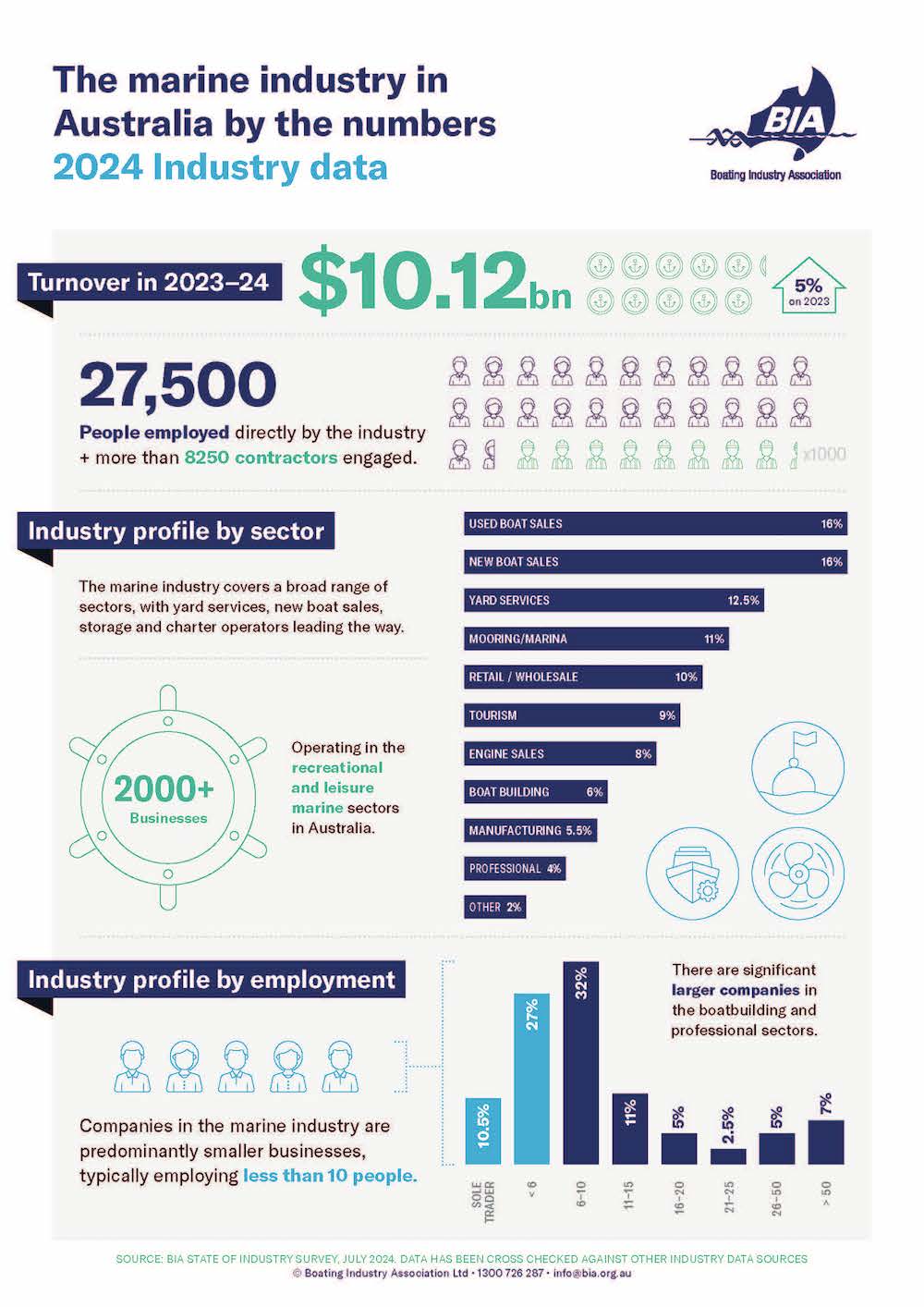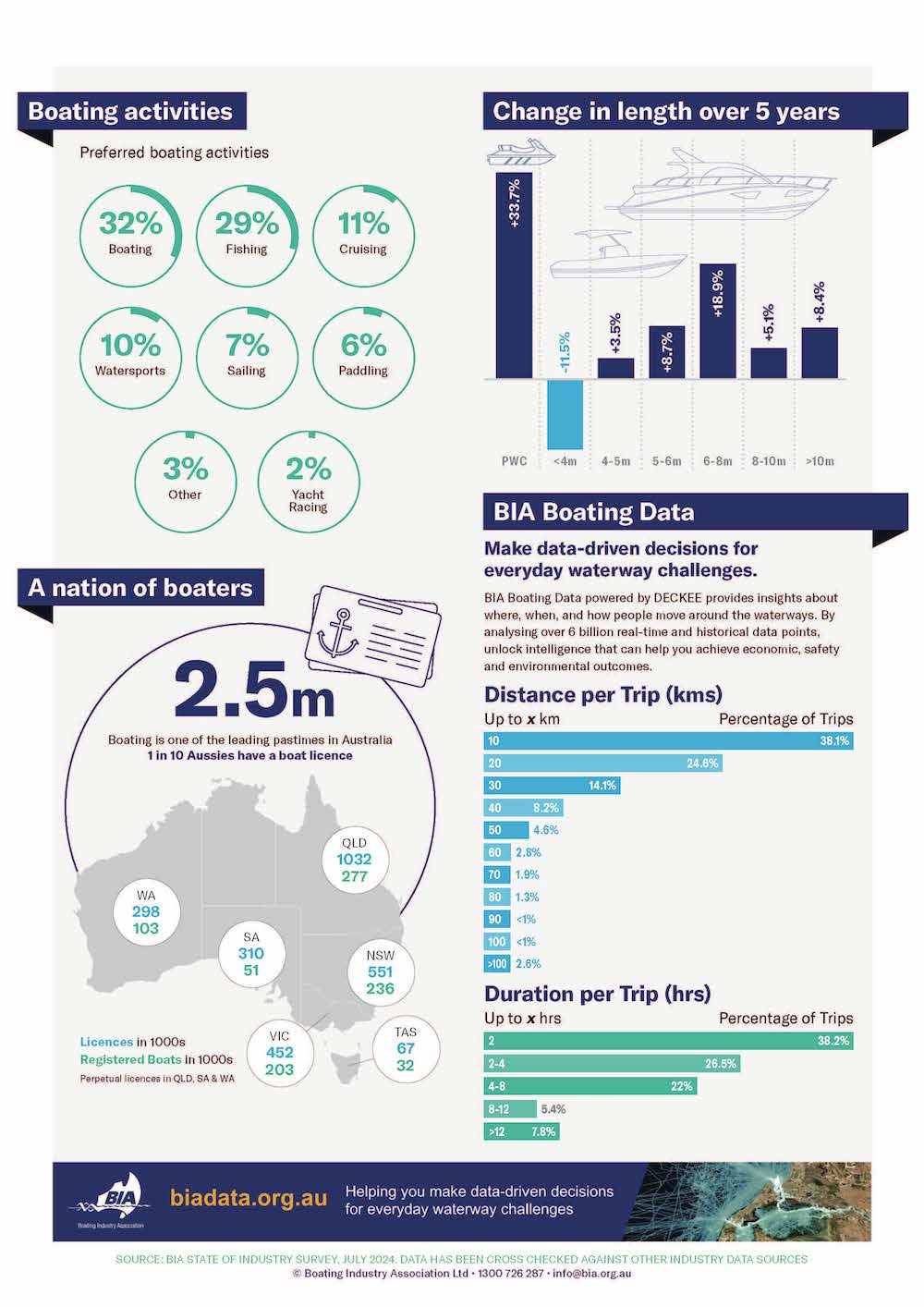The Boating Industry Association (BIA) today released the state of the industry data report revealing national turnover at $10.12 billion for 2023-24, a 5% increase on the previous year.
BIA President Adam Smith said the report, launched on day one of the Sydney International Boat Show, demonstrated continued growth for the sector despite economic challenges over the past 12 months.
“There are now 27,500 people directly employed in the boating industry as well as 8250 more in contractor roles supporting more than 2000 businesses across the nation,” said Smith.
“Seventy-five per cent are in small, family businesses, employing local workers and supporting local communities. Many are based in regional areas, and help deliver much-needed support for jobs and economies, including enhanced tourism-related spend of boating activities.”
The boating industry includes designers, manufacturers, importers, brokers, insurers, retailers, charters, yacht and boat clubs, marinas, tourism, surveyors and trades from boat builders to riggers, representing a wide range of local and global brands and providing services to a growing boating community.
Australia has more than 2.5 million people with a licence to drive a powerboat, with close to 1 million registered vessels and a countless number of non-motorised craft (such as small paddle and sail craft) which do not require registration or licensing.
Key statistics from the data report card are as follows:
- 1 in 10 Australians have a boat licence
- 970,000+ registered boats
- 10% of registered vessels are personal watercraft, fastest growing segment
- 67% of boats are under 6m
- 60% of boating trips are up to 4hrs duration
The boating industry data report card includes data intelligence from BIA Boating Data powered by DECKEE. BIA Boating Data provides insights about where, when, and how people move around the waterways. By analysing over 6 billion real-time and historical data points, businesses and organisations are able to unlock intelligence that assists achieve economic, safety and environmental outcomes.









